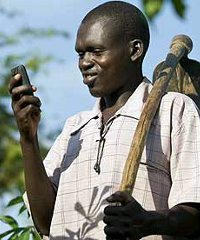In their latest paper “China’s Food security challenge: What role for Africa?” published in November 2011 (13 pages), Mr Freemantle and Mr Stevens write that China is facing serious strains on both the demand and supply side of its agricultural sector and will in the next few years have to look externally to supplement its sources of food supply.
- Who will feed China? Malthusian concerns around the world’s ability to provide sustenance for a rising population have often, as now, centered on China. With unrivalled agricultural potential, Africa too has been thrust to centre stage. Emotionally-fuelled estimations of China’s agricultural ambitions in Africa too often miss the mark. This paper assesses where (if at all) Africa fits into Beijing’s long-term food security agenda.
- Food demand is rising rapidly in China. Rising incomes and urbanisation are leading to dramatic increases in food consumption in China. China now consumes the second most food in the world, behind the United States. It is expected that, by 2015, China’s total food expenditure will double to over USD1 trillion (tr).
- Meanwhile, China is facing increasing strains on agricultural supply. Urbanisation and industrialisation are swallowing up farmland, and diminishing water tables. Between 1996 and 2006, China lost 9 million (mn) hectares (ha) of farmland.
- Boosting domestic sources of supply will be Beijing’s core response to these challenges. Agriculture’s broader role in maintaining social harmony in China is profound. Fortunately, China has the propensity and ability to boost domestic production. China is a net exporter of food and has enormous stockpiles of most soft commodities. Given pointed state support, China’s agricultural output is expected to swell by 26% to 2019.
- However, clear demand overhangs exist, meaning that China will have to seek external sources of nutrition. Two principle channels exist:
- First, China will look to enhance trade ties with food exporting nations. Between 2001 and 2010 China’s imports of soybeans rose ten-fold, from USD2.8 billion (bn) to over USD25 bn, and rubber imports from USD2 bn to USD17 bn.
- Africa is a bit player in China’s agricultural trade prospectus. 99% of China’s soybean imports come from the Americas, and three-quarters of rubber imports from the rest of Asia. In 2009, China-Africa agricultural trade was just USD4 bn, less than 4% of total trade. A disconnect exists between African agricultural export and Chinese agricultural import dynamics. That said, recent trade growth in certain commodities, such as cotton, has been impressive.
- Second, China will align aid and outward investment in agriculture to access new opportunities. Here, Africa’s role is pronounced. While cooperation remains developmental, signs of commercialism and strategic intent are clear. In general, state-owned farming groups carry out Beijing’s agricultural investments in Africa. As of 2009, China had carried out over 200 agricultural projects in Africa. Increasingly, these projects are run on a for-profit basis.
- Estimations of Chinese “land grabs” in Africa are overstated. Gulf States, as well as private investors from throughout the developing and advanced world have led the thrust of recent land acquisitions in Africa. Beijing, alarmed by local sensitivities, has remained cautious.
- Africa desperately requires capital and skills to elevate food security. Managed well, partnerships with China can be meaningful. However, domestic food security must be placed first. Then, and leveraging Chinese aid, crops suited for China’s demand dynamics can and should be emphasised. Increasingly, green technology will provide cogent opportunities.


























